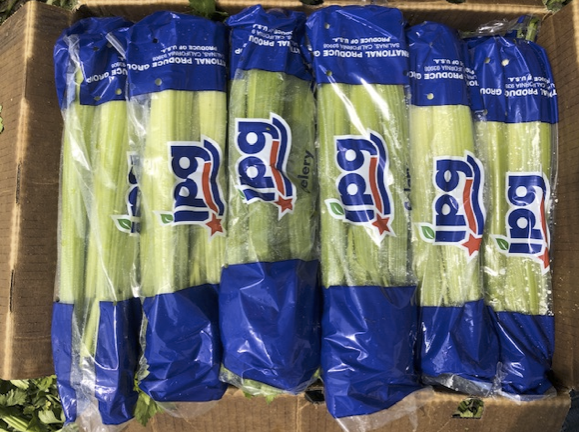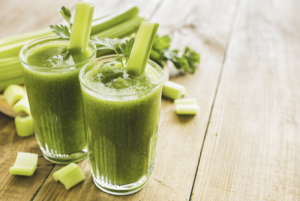Due to erratic weather on the East and West Coast, prices have skyrocketed as the demand for celery increases
April 9, 2019SALINAS, CA – As far as the spotlight goes, this should be a high time for celery, which is branching out from its reputation as a vehicle for peanut butter and cream cheese. Low supplies and uncharacteristically high demand, however, has created the perfect storm for a tight market. Sammy Duda, among the fourth generation to help lead Duda Fresh Farms, took some time to walk me through the current climate.
“Supply is significantly short due to the amount of volume and yield we lost from weather on both coasts,” Sammy shares, telling me that weather anomalies on both the East and West Coast growing regions made it impossible to offset one another. In other words, we are in the midst of a change, with the experts already working to bring balance back. “Change does not happen overnight—supply will improve once we respond and adjust to this new normal of celery consumption. Working with Mother Nature, this will take roughly 6 months for supply to meet the new demands of the category. It’s important to note that supplier and retailer communication is key to capitalizing on trends like this.”
The new demand spike is at least in part thanks to celebrity interest inspiring a new prospective fanbase.
“The celery market as a whole is afflicted with considerable crop/yield loss. Towards the end of 2018, the celery market supply was flat, but aligned with typical industry demand. Then in late December, we saw demand go through the roof with celebrity endorsements for celery juice,” Sammy says. “The market was unable to react because the supply was still aligned with historical demand patterns. Erratic weather coupled with this exponential increase in demand has caused prices to skyrocket, and new consumers who’ve never bought celery before are beginning to buy at this never before seen retail price.”
Per capita consumption of fresh celery in the U.S. was recently decreasing after remaining steady. The Duda team shared that USDA Economic Research Service showed in 2017 per capita consumption of fresh celery was 4.6 pounds per person. The high of 6.4 pounds per person was reached in 2001.
Celebrity interest has caused celery demand to go through the roof “Never did we ever anticipate such an increase in demand. With this historical spike in demand, we as farmers can’t react quickly enough to increase supply. It takes roughly 6 months from planting to harvesting, so we did not have time nor could we really react to this top consumer trend,” he explains.
Even so, as the industry looks to put steps in place to tip the scales back, Sammy says we need to entice a younger demographic to purchase celery and encourage consumers to utilize it. According to IRI data, national total celery dollar sales showed an increase of 3% over the same period a year ago for the 52-weeks ending Dec. 30, 2018 and volume showed a 5% increase over the same time period. Snacking and convenience, he adds, have both been factors in increasing demand across retailers all over the country.
With demand on the rise, celery supply isn’t expected to rise until this summer “We continually look at the category to determine movement and consumer interests,” Sammy tells me. “When celery production decisions are made, it takes about a year to turn it around. While demand continues to rise, supply is not expected to increase until summertime. We have never seen market conditions like this in the celery category and the Duda family has been farming celery since 1926.”
AndNowUKnow



